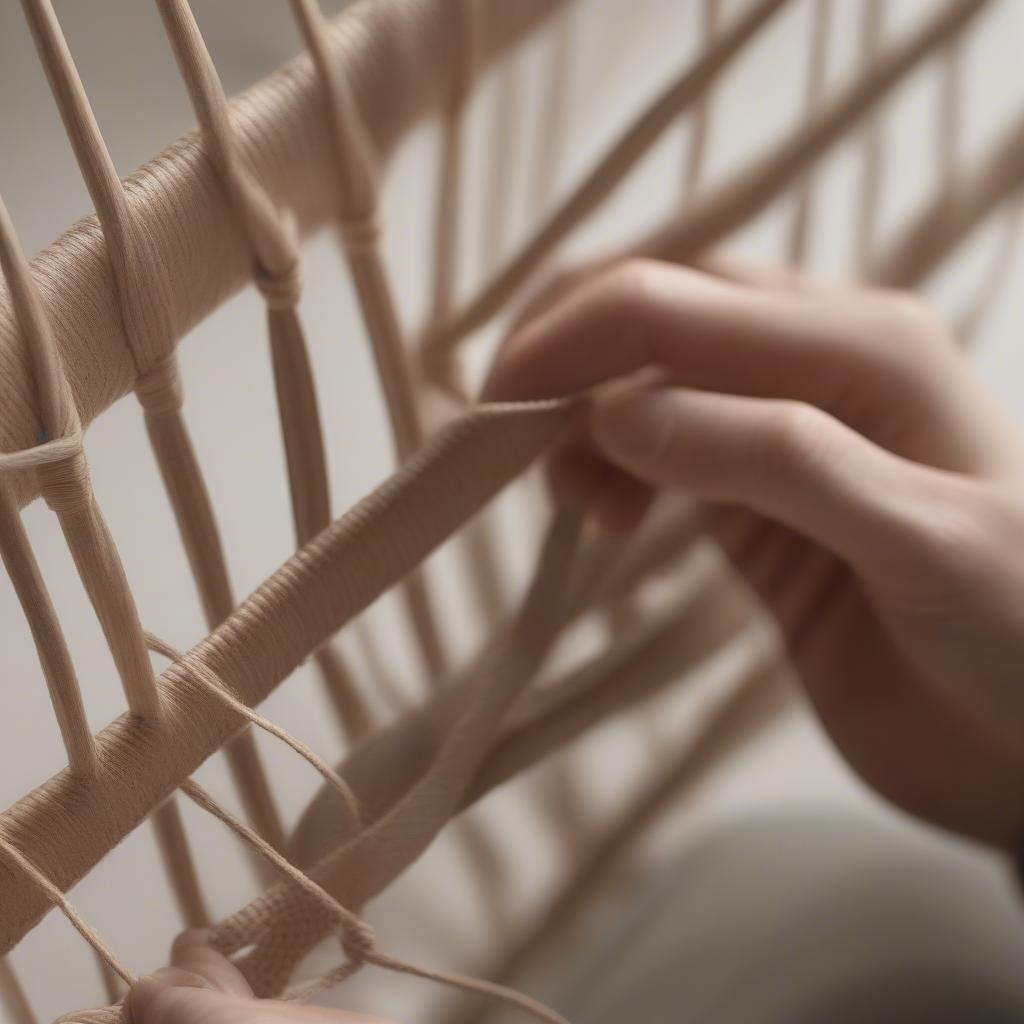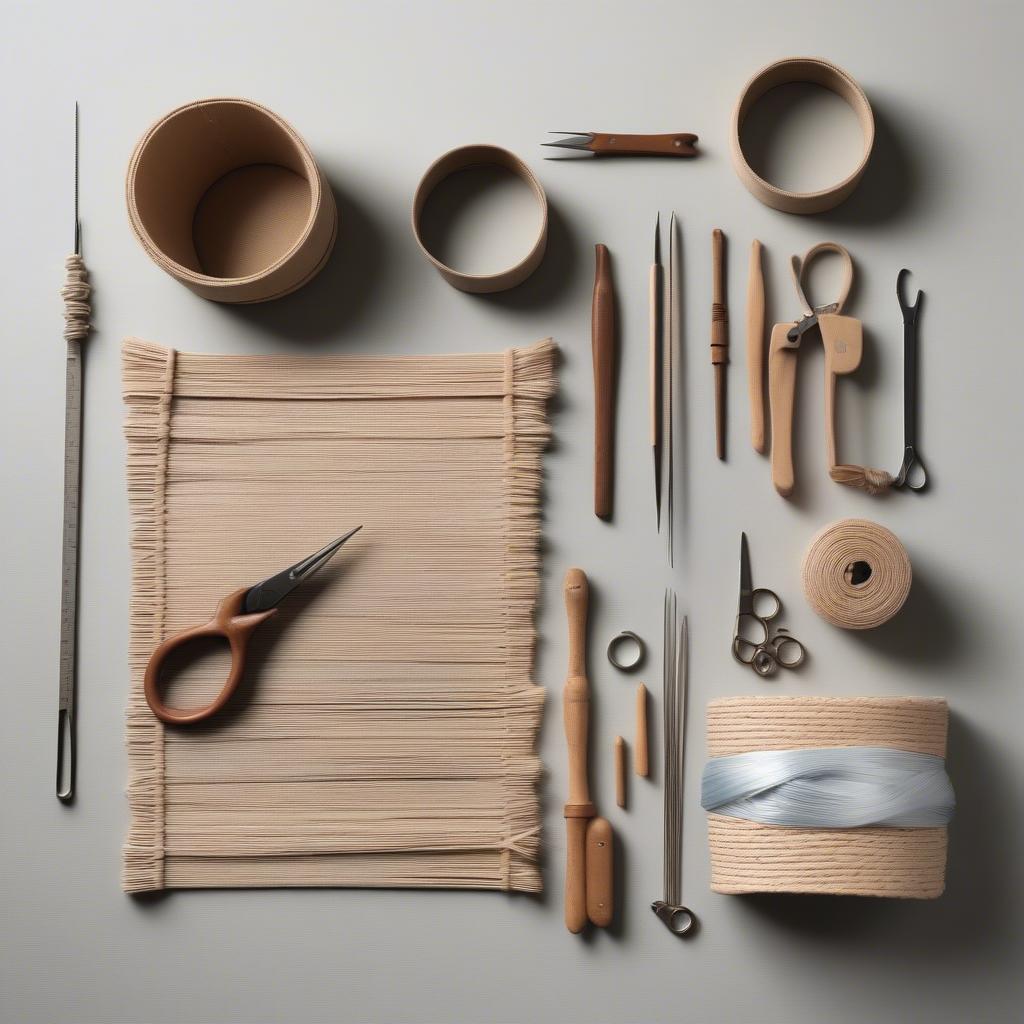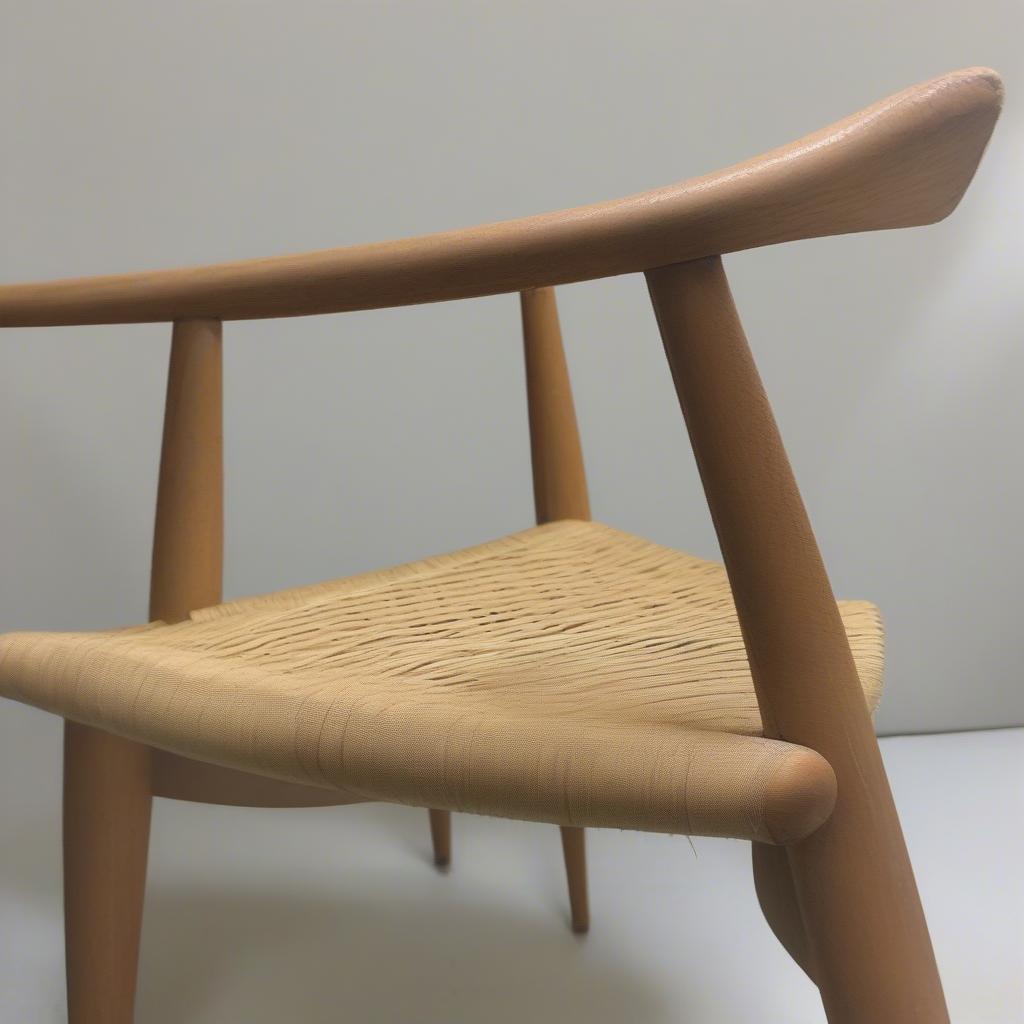Weave Chair
Weaving a Hans Wegner Chair: A Masterclass in Craftsmanship
Weaving A Hans Wegner Chair is a meticulous process that demands both skill and patience. From selecting the right materials to mastering the intricate weaving patterns, this article delves into the art of creating these iconic pieces of furniture. We’ll explore the history, techniques, and the enduring appeal of Hans Wegner’s woven chair designs.
Understanding the Craft of Weaving a Hans Wegner Chair
Hans Wegner, a renowned Danish furniture designer, is celebrated for his innovative and elegant chair designs. Many of his most iconic pieces feature intricate woven seats and backs, showcasing a beautiful blend of form and function. These woven elements not only provide comfort and support but also add a unique textural dimension to the chairs. Understanding the process of weaving a Hans Wegner chair begins with appreciating the careful selection of materials. Traditional techniques often utilize natural fibers like paper cord or Danish cord, chosen for their durability and ability to conform to the chair’s frame.
 Hans Wegner Chair Weaving Process
Hans Wegner Chair Weaving Process
The weaving itself is a highly skilled craft, requiring precision and attention to detail. Different Wegner chair designs call for unique weaving patterns, each contributing to the chair’s distinct aesthetic. The CH24 Wishbone chair, for example, boasts a complex woven seat that requires a deep understanding of tension and technique.
Materials and Tools for Weaving a Hans Wegner Chair
Choosing the right materials is crucial for achieving the desired look and feel. While paper cord and Danish cord are popular choices, other natural fibers like rattan or seagrass can also be used. The specific material used can greatly influence the final aesthetic of the chair. Consider the thickness, color, and texture of the material when planning your project. The tools required are relatively simple but essential for a successful weave. A sturdy frame, a needle, and a pair of sharp scissors are the basic necessities.
 Tools and Materials for Wegner Chair Weaving
Tools and Materials for Wegner Chair Weaving
Mastering the Weaving Techniques for a Hans Wegner Chair
From the simple yet elegant weave of the CH25 Lounge Chair to the more complex pattern found in the CH24 Wishbone Chair, weaving a Hans Wegner chair presents a unique challenge. Mastering these techniques requires patience and practice. Beginners might find it helpful to start with simpler patterns and gradually work their way up to more intricate designs. Several online resources and tutorials offer step-by-step instructions and visual guides for various Wegner chair weaving patterns. Remember, wegner wishbone style weave chair can be a fulfilling journey that connects you to the rich history of Danish design.
Restoring a Woven Hans Wegner Chair
Restoring a vintage Hans Wegner chair can be a rewarding experience, breathing new life into a cherished piece. This often involves replacing the worn-out woven seat or back, a process that requires careful consideration of the original materials and techniques.
“Restoring a Wegner chair isn’t just about repairing damage,” says renowned furniture restorer, Amelia Olsen, “it’s about preserving a piece of design history. It requires a deep understanding of the original craftsman’s intent.”
 Restored Hans Wegner Chair
Restored Hans Wegner Chair
When considering weaving a Hans Wegner chair, understanding the different weave styles for back support on chairs, like those you might see on a wood dining chair weave style back, can significantly enhance the chair’s comfort and aesthetic appeal. Similarly, if you’re working with a peacock chair, you might find helpful resources on wegner peacock chair seat weaving. These specialized guides offer valuable insights into the specific techniques and materials best suited for these iconic chair designs.
Conclusion: The Enduring Appeal of Weaving a Hans Wegner Chair
Weaving a Hans Wegner chair is more than just a craft; it’s an art form. The intricate weaving patterns, the careful selection of materials, and the meticulous attention to detail all contribute to the creation of a truly iconic piece of furniture. From the classic Wishbone chair to the elegant Peacock chair, Hans Wegner’s designs continue to inspire and captivate design enthusiasts worldwide. By understanding the process and appreciating the craftsmanship involved, we can truly appreciate the enduring appeal of these timeless pieces.
FAQ
- What type of cord is typically used for weaving Hans Wegner chairs?
- How long does it take to weave a Hans Wegner chair seat?
- Where can I find resources for learning Hans Wegner chair weaving techniques?
- What are the common challenges faced during the weaving process?
- How do I care for a woven Hans Wegner chair?
- Can I use different materials for weaving a Hans Wegner chair?
- Where can I purchase replacement cord for my Hans Wegner chair?
For support, contact our 24/7 customer service team at +84 388 951 999 or visit us in Hanoi, Vietnam, or Tech Avenue, Suite 12, San Francisco, CA 94105, USA.
